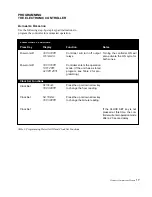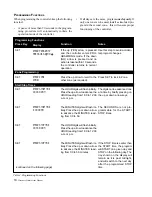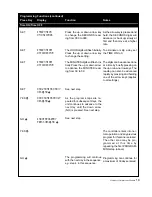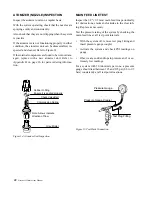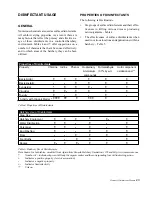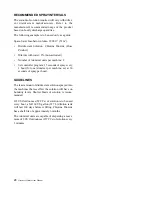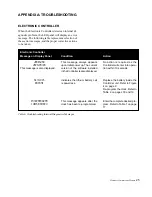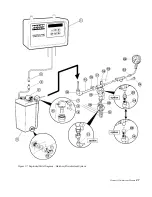
Hatchery Disinfectant Manual
31
Caution: The use of quaternary ammonium com-
pounds on poultry farms has met with resistance
in some countries because of the injurious effects
on human beings when foods are involved. It
should be withdrawn five days before the birds
are marketed.
with them. They are compatible with anionics (charged
ionic compounds) and are more active in an alkaline
pH because of their greater solubility. Their action is
rapid. Such disinfectants are effective against fungi,
gram-positive and gram-negative bacteria, but not ef-
fective against bacterial spores. They will control some
viruses. In high concentration, phenols act as a proto-
plasmic poison, penetrating and disrupting the cell wall
and precipitating the cell proteins, but in low concen-
trations only the essential enzyme systems of the cell
are disrupted. Synthetic phenols may be used for egg
dipping, hatchery and equipment sanitation, and foot-
baths.
P
HENOL
C
OEFFICIENT
This may be defined as the ratio of killing power of a
disinfectant to the killing power of pure phenol. It is
used to compare the efficiency of disinfectants, using
phenol as the base. But the intricacies of the labora-
tory comparison are many; the test must be regulated
and conducted carefully.
I
ODINE
Iodine compounds are available as iodophors, which
are combinations of elemental iodine and an organic
solubilizing agent, usually a nonionic surface action
agent that is soluble in water. The compounds react only
with nucleic acid of the cell contents. They are good
disinfectants in an acid situation (pH of 2.0 to 4.0), but
activity diminishes in an alkaline pH and in the pres-
ence of organic material. They are effective against
gram positive and gram-negative bacteria, attacking the
nucleic acid of the organisms. Iodophors are also ef-
fective against fungi and some viruses.
C
HLORINE
Chlorine is an effective constituent of certain disin-
fectants. Included are the powder forms of sodium or
calcium hypochlorite combined with hydrated
trisodium phosphate, liquids containing sodium
hypochlorites and organic chloramines.
Chlorine compounds are good disinfectants when free
chlorine is available in abundance (200 to 300 ppm).
When elemental chlorine or hypochlorites are added
to water they produce hypochlorous acid (HOCI), which
produces the bactericidal action. But in the presence
of organic material the chlorine combines with the or-
ganic material to form stable compounds, and there-
fore reduces the free chlorine in solution.
Chlorine is effective against bacteria and fungi, and
when coming from hypochlorites it attacks both the
protein coat and the nucleic acids of viruses. Bound
chlorines, as in chloramines, have poor activity. Chlo-
rine solutions are much more active in acid solutions
than in alkaline, and in a warm rather than in a cold
mixture. Sodium hypochlorite is very active, but its
disinfecting life is short. In contrast, calcium hypochlo-
rite is less active, but its disinfecting quality persists
for a long period. Chlorine compounds are somewhat
irritating to the skin and corrosive to metal.
Q
UATERNARY
A
MMONIUM
These compounds are cationic (have positively charged
ions), odourless, clear, generally non-irritating, have a
deodorizing and detergent action, and are quite effec-
tive as surface disinfectants. The most common is alkyl
dimethyl benzyl ammonium chloride. Quaternary am-
monium compounds are extremely water soluble, but
cannot be used in soapy solutions or where there is a
residue of soap or anionic detergent. Their germicidal
properties are reduced in the presence of organic ma-
terial.
These chemicals are effective against gram-positive
organisms, moderately effective against gram-negative,
and will control some fungi and some viruses. Their
effectiveness is increased by the addition of sodium
carbonate inasmuch as this increases the alkalinity of
the solution, and are quite effective in mild acid carri-
ers and with hard waters. A solution of 500 ppm
quaternary ammonium, 200 ppm, EDTA (ethylene
diamine tetraacetic acid) and sodium carbonate added
to adjust the pH to about 8.0 (about 200 ppm) is an
excellent hatchery disinfectant. It may be used on
floors, walls, and incubator trays.
End of unabridged text.

